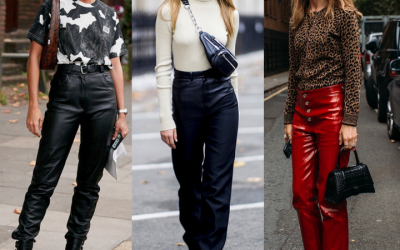Sustainable fashion is important because it helps diminish the environmental impact of clothing manufacture, improves social conditions for workers in the industry, and contributes to preserving natural resources.
Sustainability in fashion has been on the rise in recent years, as more and more people become aware of the importance of sustainable practices in all industries.
In this article, we will explore why sustainable fashion is important, and discuss some of the ways in which sustainable practices can make a better world for all of us.
A Brief Introduction to Sustainable Fashion
Sustainable fashion refers to the use of materials and manufacturing processes that have a minimal negative environmental impact. It also encompasses the principles of social responsibility, which take into account the working conditions and welfare of garment workers.
Sustainable fashion only began to gain mainstream attention in the past few decades. But, in a lot of ways, sustainable fashion aims to return to more traditional ways of manufacturing clothing.
In the late 1980s, brands like Patagonia started making inroads into sustainable manufacturing and logistics practices. This was directly in response to the meteoric rise of fast fashion brands at the time.
Patagonia doesn’t claim to be the first sustainable fashion brand but it played a pivotal role in promoting widescale adoption of sustainable fashion concerns.
Those sustainable fashion brands consciously impacted their price points in an effort to reduce the impact their clothes made on the environment.
Many sustainable clothing brands have joined the movement since, but it is an inescapable fact that manufacturing sustainably almost always results in higher prices for consumers.
As a result, the sustainable slow fashion movement is only gaining traction slowly and cautiously. Most fast fashion brands only take steps toward sustainability when they are pressured into it by public opinion.
The Reasons why Sustainable Fashion Matters
That’s about everything you need to know to understand that sustainable fashion is a key element of the future of the garment industry.
Next, we’ll cover the top reasons why sustainable fashion is so important and why we need to take it seriously going forward.
Sustainable Brands Promote Better Social Conditions
One of the key benefits of sustainable fashion is that it often leads to better social conditions for garment workers.
While not all sustainable brands are created equal, most of them place a high value on ensuring safe and fair working conditions for their employees.
In contrast, fast fashion brands have been notorious for their poor labor practices, especially in developing countries that manufacture clothes. There have been multiple reports of sweatshops and child labor in factories making clothes for popular fast fashion brands.
Garment workers in these factories often face extreme pressure to produce clothing quickly and at low costs. This can lead to dangerous work environments and unfair wages.
The fact is, when we buy from sustainable fashion brands, we’re supporting businesses that prioritize human rights, fair wages, and worker welfare above a short-term boost in profits.
Sustainable Fashion Production Preserves Water
The traditional cotton farming process is incredibly water- and energy-intensive.
It takes about 2500 gallons of water to produce a single T-shirt. This number can jump up to 7000 gallons when you factor in the water needed to grow the cotton, dye it, and manufacture the shirt.
All of that water usage creates an enormous strain on our global water resources. And it’s not just conventional cotton; almost every step in the clothing production process consumes vast quantities of water.
The fast fashion industry pollutes freshwater with hazardous chemicals that flow into waterways, in addition to consuming water.
In contrast, many sustainable fashion companies place limits on water usage throughout their chain of supply.
Sustainable fashion tackles this problem by using fabrics made from sustainable materials like bamboo, hemp, and recycled polyester. These materials require far less watering and energy to produce than cotton does.
In fact, some sustainable materials like bamboo can grow entirely on their own without the use of pesticides or fertilizers.
Sustainable Fashion Prioritizes Recycled Materials
The EPA reports that less than 15% of all textiles were recycled in 2018.
“The recycling rate for all textiles was 14.7 percent in 2018, with 2.5 million tons recycled. Within this figure, EPA estimated that the recycling rate for textiles in clothing and footwear was 13 percent based on information from the American Textile Recycling Service.”
Taking into account that textiles are almost 100% recyclable and recoverable, that’s an extremely small number.
In general, a sustainable clothing brand should take into account how much of the fashion materials used in their clothing are recycled.
Recycled fibers are not just a more sustainable option from the standpoint of reducing resource extraction. They also minimize waste in the textiles industry and reduce carbon dioxide emissions throughout the manufacturing process.
Recycling also contributes to shortening the supply chain between manufacturers and materials.
This leads to our next point.
Sustainable Fashion Reduces CO2 Emissions in the Fashion Industry
According to the Carbon Literacy Project, the fashion industry accounts for 10% of global pollution and produces more carbon emissions than all air travel combined.
This is why sustainable fashion brands are so important; they can help us reduce our CO2 emissions by using fewer natural resources like water and traditional cotton plants.
Fashion companies that use more sustainable fabrics like hemp or bamboo also produce less carbon dioxide than those that rely solely on conventional materials such as leathers or synthetics.
Companies like Everlane and Patagonia have taken steps to reduce their carbon footprints by using renewable energy in manufacturing facilities or offsetting any unavoidable emissions with investments into projects that actively remove carbon dioxide from the atmosphere.
In contrast, fast fashion brands generally promote the attitude that staying on trend is important and encourage us to continuously update our wardrobe. Ultimately, we should aim to change our perception that it’s ok to wear a garment only a few times before we replace or discard it.
Sustainable Fashion Helps Save Animal Lives
Animal agriculture makes a huge contribution to global warming and other environmental issues.
It’s also one of the most inhumane industries on Earth, where animals are abused, beaten, and slaughtered by the billions for their skins or furs every year. Sustainable fashion helps to save animal lives by reducing demand for animal products like leathers or cowhides used in clothing production processes.
The sustainable fashion industry has been increasingly embracing non-animal alternatives, and there’s one for nearly every type of apparel – polyester produced from reclaimed plastic from waterways, bags created using recycled seatbelts and water bottles, plant-based compostable sneakers, yeast silk clothing, and even vegan wool alternatives.
Conclusion
In a world where fashion is one of the most lucrative industries and we’re all so used to seeing beautiful, new clothes on our favorite celebrities every day, it can be hard to wrap your head around why sustainable fashion should matter.
But, given the reasons listed above, we think you will agree that supporting ethical practices like sustainable clothing just makes sense for everybody involved – from the environment to consumers themselves who want their purchases to have value well into the future.
What do you think? Will you try to change your shopping habits to more sustainable choices?




